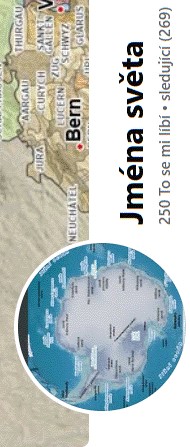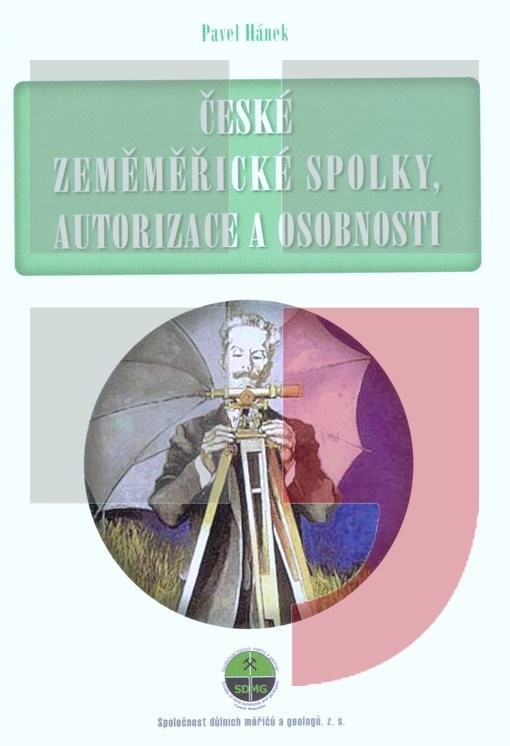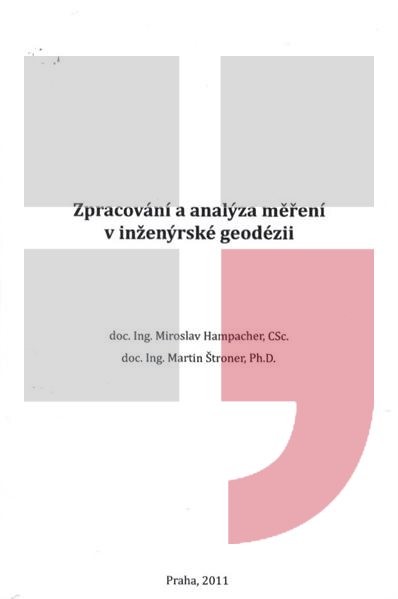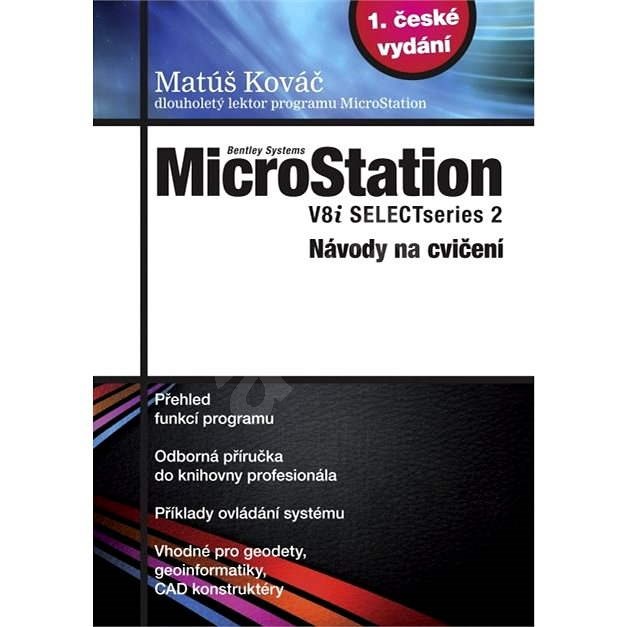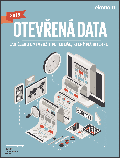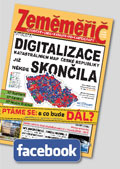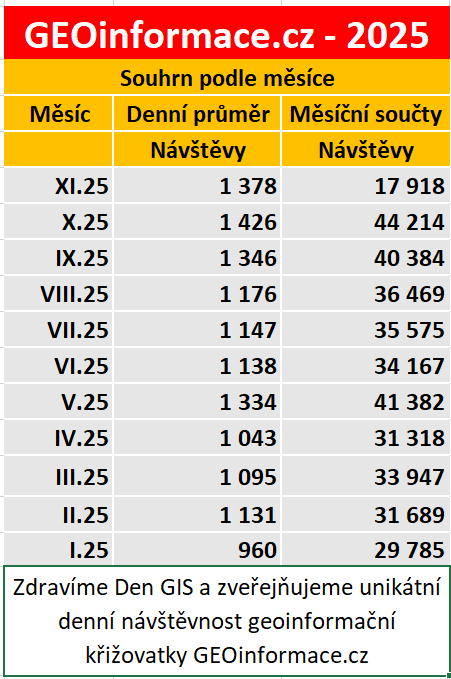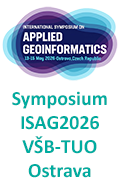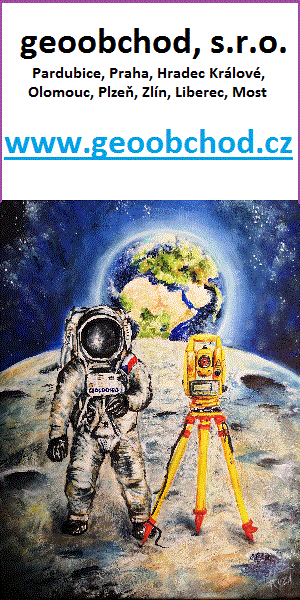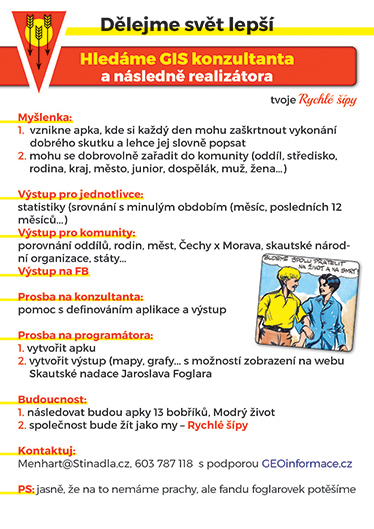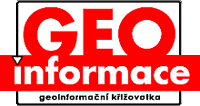zprávy
zdroje zpráv:Silvestr 2019
23.12.2019 10:10 ČÚZK /Urady/Katastralni-urady/Katastralni-urady/Katastralni-urad-pro-Moravskoslezsky-kraj/Katastralni-pracoviste/KP-Novy-Jicin/O-uradu/Aktuality/Silvestr-2019Silvestr 2019
23.12.2019 10:10 ČÚZK - předpisy a opatření Katastrální úřad pro Moravskoslezský kraj - Katastrální pracoviště Nový Jičín zveřejnil novou aktualitu: Vážení klienti,z provozních důvodů bude možno dne 31.12.2019 hradit správní poplatky v hotovosti pouze do 11:00 hodin.
Od 11:00 do 15:00 hodin bude možno platit správní poplatek platební kartou, kolkovou známkou nebo převodem z účtu, na základě podkladu pro platbu, který vám vystaví zaměstnanec podatelny.
Děkujeme za pochopení.
Silvestr 2019
23.12.2019 10:09 ČÚZK /Urady/Katastralni-urady/Katastralni-urady/Katastralni-urad-pro-Moravskoslezsky-kraj/Katastralni-pracoviste/KP-Bruntal/O-uradu/Aktuality/Silvestr-2019Silvestr 2019
23.12.2019 10:09 ČÚZK - předpisy a opatření Katastrální úřad pro Moravskoslezský kraj - Katastrální pracoviště Bruntál zveřejnil novou aktualitu: Vážení klienti,z provozních důvodů bude možno dne 31.12.2019 hradit správní poplatky v hotovosti pouze do 11:00 hodin.
Od 11:00 do 15:00 hodin bude možno platit správní poplatek platební kartou, kolkovou známkou nebo převodem z účtu, na základě podkladu pro platbu, který vám vystaví zaměstnanec podatelny.
Děkujeme za pochopení.
Přerušení dodávky el. energie na KP Krnov
23.12.2019 9:27 ČÚZK - předpisy a opatření Katastrální úřad pro Moravskoslezský kraj - Katastrální pracoviště Krnov zveřejnil novou aktualitu: Vážení klienti,dne 10.1.2020 přeruší společnost ČEZ Distribuce, a.s. Katastrálnímu úřadu pro Moravskoslezský kraj, Katastrálnímu pracovišti Krnov dodávku elektřiny v době od 7:15 do 15:00.
Z uvedeného důvodu budou v čase od 8:00 do 12:00 služby v budově Katastrálního pracoviště Krnov omezeny pouze na přijetí podání vkladu na podatelně a přijetí žádosti o poskytnutí informací z katastru nemovitostí. Úhradu správního poplatku je možné provést převodem z účtu nebo v hotovosti.
LeddarTech Exhibits LiDAR Technology at CES 2020 from January 7-10 in Las Vegas in Collaboration with the Government of Quebec
23.12.2019 9:00 GISCafe.com Webcasts-Webinars QUEBEC CITY, Dec. 17, 2019 (GLOBE NEWSWIRE) -- LeddarTech®, an industry leader in LiDAR technology that designs the most versatile and scalable …Vánoční režim
23.12.2019 8:19 GISportal.cz
Vážené čtenářky, vážení čtenáři, Přejeme Vám klidné a odpočinkové Vánoce, my si nadělíme to samé, a první článek zde bude pro Vás 6. 1. 2020. Do té doby Vám přejeme co nejméně pracovních emailů a času stráveného u počítačů. redakce GISportalu.
The post Vánoční režim appeared first on GISportal.cz.
Studentské experimenty na mezinárodním balónovém projektu
23.12.2019 0:48 Česká kosmická kancelářČeská kosmická kancelář bez projektového financování po roce opět umožnila českým studentským týmům zúčastnit se mezinárodního projektu „Citizen science close to space“.
Studentské experimenty na mezinárodním balónovém projektu
23.12.2019 0:48 Česká kosmická kancelářČeská kosmická kancelář bez projektového financování po roce opět umožnila českým studentským týmům zúčastnit se mezinárodního projektu „Citizen science close to space“.
PF 2020
23.12.2019 0:00 Státní pozemkový úřad Děkujeme za Vaši přízeň a těšíme se na další spolupráci.1. kolo veřejných nabídek nemovitých věcí určených k vydání oprávněným osobám podle zákona č. 229/1991 Sb.
23.12.2019 0:00 Státní pozemkový úřad Vyhlášení 1. kola veřejných nabídek nemovitých věcí určených k vydání oprávněným osobám podle zákona č. 229/1991 Sb.2. kolo veřejných nabídek nemovitých věcí určených k vydání oprávněným osobám podle zákona č. 229/1991 Sb.
23.12.2019 0:00 Státní pozemkový úřad Vyhlášení 2. kola veřejných nabídek nemovitých věcí určených k vydání oprávněným osobám podle zákona č. 229/1991 Sb.4. kolo veřejných nabídek nemovitých věcí určených k vydání oprávněným osobám podle zákona č. 229/1991 Sb.
23.12.2019 0:00 Státní pozemkový úřad Vyhlášení 4. kola veřejných nabídek nemovitých věcí určených k vydání oprávněným osobám podle zákona č. 229/1991 Sb.3. kolo veřejných nabídek nemovitých věcí určených k vydání oprávněným osobám podle zákona č. 229/1991 Sb.
23.12.2019 0:00 Státní pozemkový úřad Vyhlášení 3. kola veřejných nabídek nemovitých věcí určených k vydání oprávněným osobám podle zákona č. 229/1991 Sb.Prezentace na téma Reforma státu a geomatici
22.12.2019 13:36 Hrdlička Martin Hrdlička na pozvání místopředsedy ODS Martina Kupky vystoupil na..HRDLIČKA spol. s r.o. - Prezentace na téma Reforma státu a geomatici
22.12.2019 13:36 Hrdlička Martin Hrdlička na pozvání místopředsedy ODS Martina Kupky vystoupil na..Aktivně podporujeme vznik standardů pro ŘSD ČR
22.12.2019 13:34 Hrdlička Geodetická společnost Hrdlička byla oslovena ŘSD ČR..HRDLIČKA spol. s r.o. - Aktivně podporujeme vznik standardů pro ŘSD ČR
22.12.2019 13:34 Hrdlička Geodetická společnost Hrdlička byla oslovena ŘSD ČR..HRDLIČKA spol. s r.o. - Spustili jsme nový web HRDLIČKA
22.12.2019 13:33 Hrdlička Od 1. prosince jsme sputili nový web, který je více přehlednější..Spustili jsme nový web HRDLIČKA
22.12.2019 13:33 Hrdlička Od 1. prosince jsme sputili nový web, který je více přehlednější..HRDLIČKA spol. s r.o. - Setkání s partnery firmy HRDLIČKA
22.12.2019 13:33 Hrdlička Společnost HRDLIČKA pořádala spolu s Městem Česká Lípa pro své partnery..Setkání s partnery firmy HRDLIČKA
22.12.2019 13:33 Hrdlička Společnost HRDLIČKA pořádala spolu s Městem Česká Lípa pro své partnery..Zdarma prémiový účet UtilityReport do konce ledna
22.12.2019 11:30 ZeměměřičFirma Hrdlička, která provozuje aplikaci UtilityReport na hromadné vytváření žádostí o vyjádření k existenci sítí, oznámila, že spustila rozhraní se Skupinou ČEZ. Nyní je tedy možné elektronicky pomocí služby UtilityReport najednou hromadně odeslat žádosti o vyjádření k existenci sítí do ČEZ Distribuce, a. s., Telco Pro Services, a. s. i ČEZ ICT Services, a.s. Hrdlička aplikaci neustále rozvíjí, takže například […]
The post Zdarma prémiový účet UtilityReport do konce ledna appeared first on Zeměměřič.
GIS Esri v ČR virtuálne a bezplatně pro studenty a pedagogy
22.12.2019 7:00 Česká asociace pro geoinformace Konference GIS Esri v ČR proběhne letos ve virtuální podobě. Přihlášky je možné stále podávat do 30. října 2020. Letos má 100% slevu z registračního poplatku každý uživatel organizace, která má platnou systémovou podporu (maintenance), a každý student či pedagog. Zajímavý program nalezneteZvýšení poplatku za přijetí návrhu na zahájení řízení o povolení vkladu do KN
21.12.2019 8:07 ZeměměřičPodle zákona č. 364/2019 Sb., který byl přijat 17. prosince 2019 a jímž se mění některé zákony v oblasti daní v souvislosti se zvyšováním příjmů veřejných rozpočtů, dochází od 1. ledna 2020 ke změně výše některých správních poplatků, zejména poplatku za přijetí návrhu na zahájení řízení o povolení vkladu do katastru nemovitostí z předchozích 1000 Kč na 2000 Kč. Odkaz na návrh zákona a důvodovou zprávu […]
The post Zvýšení poplatku za přijetí návrhu na zahájení řízení o povolení vkladu do KN appeared first on Zeměměřič.
§14, ods.8: o práve na uzavretie nájomnej zmluvy
20.12.2019 22:20 Komora pozemkových úprav SR§14, ods.8 len kopíruje zmeny v zákona č.504/2003 Z.z. o nájme poľnohospodárskych pozemkov.
RSU2-based Robotics Team receives $4K sponsorship from Maine-based software company - Blue Marble Geographics
20.12.2019 20:50 GISCafe.com Webcasts-Webinars Hallowell, Maine – December 20, 2019 – RSU2-affiliated robotics team Delta Prime Robotics announced on Friday that it has received a …Esri Enters Into Licensing Agreement with European Commission
20.12.2019 20:48 GISCafe.com Webcasts-Webinars New Agreement to Provide Geospatial Tools for European Union’s Executive ArmROTTERDAM, The Netherlands — (BUSINESS WIRE) — December …
NV5 Completes the Acquisition of Quantum Spatial, Schedules January 7 Conference Call to Discuss Strategic Benefits
20.12.2019 20:48 GISCafe.com Webcasts-Webinars HOLLYWOOD, Fla., Dec. 20, 2019 (GLOBE NEWSWIRE) -- NV5 Global, Inc. (the “Company” or “NV5”) (Nasdaq: NVEE), a provider of professional and …New Mexico Signs Participating Addendum with DroneUp Providing Public Sector Agencies Access to Drone Services
20.12.2019 18:39 GISCafe.com Webcasts-Webinars VIRGINIA BEACH, Va., Dec. 19, 2019 — (PRNewswire) — DroneUp, LLC and the State of New Mexico have signed a Participating Addendum for …From Sky to Ground, XAG Launches Farm Robots and Smart Agriculture Management System
20.12.2019 18:39 GISCafe.com Webcasts-Webinars BEIJING, Dec. 20, 2019 — (PRNewswire) — Smart Agriculture Conference (SAC 2020), hosed by XAG, co-organised by Chinese National …CleverScan manhole inspection system from Envirosight now integrates with Trimble R2 GPS-capable receiver
20.12.2019 18:39 GISCafe.com Webcasts-Webinars Receiver sends GPS info in real-time via wireless Bluetooth connection.RANDOLPH, N.J., Dec. 20, 2019 — (PRNewswire) —
RANDOLPH, N.J., …
Woolpert Acquires Southern Mapping, a Geospatial Firm Based in South Africa
20.12.2019 18:39 GISCafe.com Webcasts-Webinars Southern Mapping is an international aerial survey and mapping company that specializes in high-accuracy lidar, hyperspectral imagery and remote …VZ: Strategie SPÚ na roky 2021 – 2025
20.12.2019 15:22 ZeměměřičStátní pozemkový úřad vypsal přes vánoce veřejnou zakázku. Předmětem plnění této smlouvy je zpracování nové Strategie rozvoje Státního pozemkového úřadu 2021 až 2025, jejímž výsledkem je vytvoření koncepčního dokumentu a navazujících implementačních krátkodobých plánů, zaměřených na rozvoj služebního úřadu, zkvalitnění a zefektivnění činností, mající dopad do vnitřní organizace a řízení služebního úřadu. Strategie úřadu by se tedy měla […]
The post VZ: Strategie SPÚ na roky 2021 – 2025 appeared first on Zeměměřič.
Postdoctoral Research Scholar in Remote Sensing
20.12.2019 11:35 Postdoctoral Research Scholar in Remote SensingThe School of Geographical Sciences and Urban Planning (SGSUP) at Arizona State University (ASU) seeks applications for a Postdoctoral Research Scholar with an anticipated start date of March 1, 2020 and preferably should be filled by June 1, 2020. The postdoctoral scholar will conduct research with Professor Amy Frazier on an NSF-sponsored […]University of Alabama Associate or Full Professor in Climate Modeling / Climate and Human Health
20.12.2019 11:34 ttps://facultyjobs.ua.edu/postings/46175 ALABAMA, TUSCALOOSA 35487-0322. The University of Alabama, Department of Geography seeks a new colleague with research expertise in Climate Modeling or Climate and Human Health, starting August 16, 2020 at the rank of Associate Professor or Professor, with tenure. This search is part of an effort to elevate the University of Alabama’s visibility and […]Postdoctoral Research Fellow Position in Spatial Cognition and Geographic Visualization at the University of California Santa Barbara
20.12.2019 11:32 The MOVE Laboratory (http://move.geog.ucsb.edu) at the Geography Department at UC Santa Barbara is hiring a postdoctoral research fellow with a background in Spatial Cognition, Data Visualization, Cartography, or Human-Computer Interaction. The successful candidate will be engaged in an NSF funded project entitled: “Visualizing Motion: A Framework for the Cartography of Movement”. The project aims to […]Tentokrát jsme prováděli laserové skenování z dronu v Adršpašsko-teplických skalách
20.12.2019 10:39 UpVisionTentokrát jsme prováděli laserové skenování z dronu v Adršpašsko-teplických skalách. Tentokrát laserové skenování z dronu v Adršpašsko-teplických skalách. 🙂 Zveřejnil(a) UpVision dne Pátek 20. prosince 2019
The post Tentokrát jsme prováděli laserové skenování z dronu v Adršpašsko-teplických skalách appeared first on Upvision.
From airport approaches to eCall in cars – 10 years of EGNOS
20.12.2019 10:39 ESA Navigation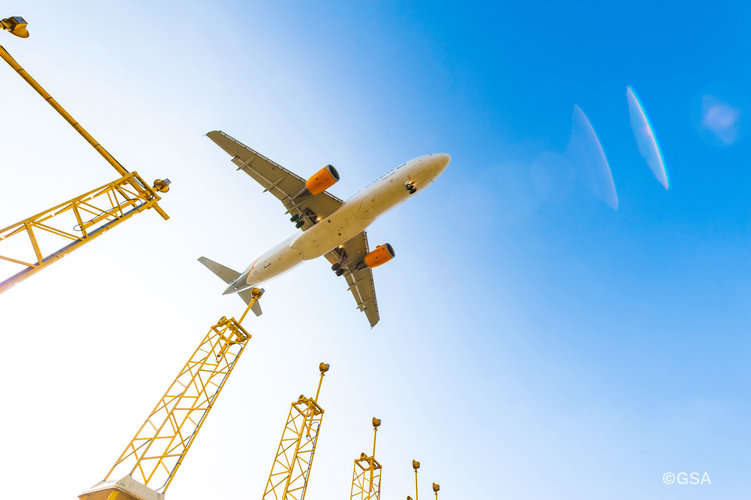
The Galileo satellite navigation system has been providing Initial Services for three years now. Meanwhile Europe’s other satnav system has marked its tenth anniversary: EGNOS has been delivering enhanced positioning to users across our continent, including safety-critical services such as aircraft landings for a growing number of European airports.
A message from Carlo des Dorides, GSA Executive Director
20.12.2019 10:17 European GNSS Agency
This has been a year of tremendous growth for the GSA, Galileo, EGNOS and the European Space Programme as a whole. We hit the ground running in 2019, buoyed by a wave of optimism following the successful European Space Week, held in in Marseille last December.
At the end of 2018 we launched the Accuracy Matters campaign to raise awareness among end users and the public about the benefits of Galileo. This campaign continued to run throughout 2019 and has been very effective in raising the public profile of the European space programme in general and of Galileo in particular.
Throughout the year, we stayed true to our mission of putting users at the centre of Galileo service provision and work continued at full speed to prepare for the launch of Full Operational Capability next year. In February, we commissioned a batch of four Galileo satellites, bringing the number of launched satellites to 26. February also saw the launch of the world’s first Galileo-enabled personal location beacon (PLB), with the Return Link Service endorsed by COSPAS-SARSAT towards the end of the year, further consolidating Galileo’s contribution to global search and rescue.
In aviation, the European space programme continued to make a significant contribution to increased safety and efficiency, and the GSA signed a Memorandum of Understanding with the deployment manager for the Single European Sky ATM Research (SESAR) on future cooperation to modernise EU air traffic management by leveraging Galileo and EGNOS.
EGNOS is continuing its evolution towards EGNOS V3, which will augment both GPS and Galileo in the L1 and L5 bands, supported by payload launched this year. Furthermore, following the successful testing of EGNOS corrections in the maritime domain at the end of last year, EGNOS has also been performing well for the maritime community.
There were major developments for the space sector in Europe in April, when the European Parliament endorsed a provisional agreement on the EU Space Programme for 2021-2027. This new EUR 16-billion programme will help maintain and further enhance the EU's leadership in space. The new programme also has major implications for the GSA, which will grow into the European Agency for the Space Programme (EUSPA) with an expanded mandate to manage the market uptake and communications of the Copernicus Earth observation programme, helping ensure that synergies between Galileo and Copernicus can be exploited to the benefit of European society and business. The Space Programme also introduces the new security-related space initiatives Space and Situational Awareness (SSA) and Governmental Satellite Communication (GOVSATCOM), which will put Europe in a better position to react to ongoing changes in the international space sector.
The skies were not entirely cloud-free this year, however. In July a technical incident related to the Galileo ground infrastructure resulted in a temporary interruption of the Galileo initial navigation and timing services. Following the incident, we worked closely with all our partners to remedy the situation as quickly as possible and an Independent Inquiry Board was set up by the European Commission to identify the root causes of the incident. While this incident was a setback, valuable lessons were learned ahead of reaching Full Operational Capability and I believe that the GSA and the Galileo programme will be stronger as a result.
September was an exciting month. Galileo reached a major milestone, when the estimated number of Galileo-enabled smartphones in use reached 1 billion. At the same time, the GSA celebrated its 15th anniversary, as part of which we signed a cooperation agreement with the European Investment Bank to support investment in the European space-based service economy. This agreement will help ensure that the European space programme is leveraged to the fullest extent to allow Europeans reap the greatest possible benefits in terms of economic growth and job creation.
In October we launched the 6th issue of our GNSS Market Report. Providing comprehensive information on the dynamic global GNSS market along with in-depth analysis of the latest global trends and developments, this report was eagerly awaited by all market stakeholders and was downloaded over 1,000 times in the first 24 hours. The 1-billion smartphones milestone reached in the previous month, and the market uptake figures in the Market Report, particularly in new markets such as drones and New Space, are extremely encouraging and indicate a growing EU share of the market for downstream applications.
The year drew to a close with three successful demos stemming from GSA research and development projects (Horizon 2020 and Fundamental Elements), again clearly showing the tangible benefits and innovation delivered when EU funding, industry and SMEs come together. In the first of these the GSA and its partners successfully performed end-to-end tests on remote beacon activation using the Galileo Return Link Service (RLS), helping to validate the operational concept for a potential new use of Galileo to support fast response in distress situations. Then we had a live demo of the first autonomous vehicle powered by Galileo, during which an electric car was autonomously driven on a track and public roads, in a world first for Galileo. The PRoPART Galileo-based positioning solution for automated trucks and advanced driver assistance systems was also successfully tested at the end of the month.
These are exciting times for the space industry, 2020 will mark a turning point for Europe’s space programmes and for the GSA, with the Galileo programme getting closer to Full Operational Capability and the GSA to take up its expanded responsibilities within the European Agency for the Space Programme. In the 15 years since it was created, the GSA has put together a uniquely talented and interdisciplinary team with a diverse range of skills and expertise. As a result, the GSA has a stronger basis than ever and is ready to tackle the challenges ahead and turn Europe’s investment in space into opportunities for growth.
EUSPA will usher in a new era for the EU space programme. With its expanded mandate, our team will work to maintain our excellent performance in operations management, service delivery and security. We will also open up new markets and applications, create new funding opportunities and reach out to new stakeholders and user communities. Consolidation of the EU space programmes within one agency will make it possible to explore new horizons and create even stronger links between our satellites in space and the needs of users on the ground.
Our core aim will always be to strengthen the European space programme, while at the same time building an Agency that is future-proof, ready to learn and grow and quickly respond to change, because it is only in this way that we can consolidate the EU’s position as a global space power.
As the year draws to a close, I would like to express my sincere gratitude to all the GSA staff for their hard work and commitment throughout the year, and to the European GNSS user community for their continued trust and support. It is thanks to this support that European GNSS continues to flourish.
Best wishes for 2020 to all of you!
Media note: This feature can be republished without charge provided the European GNSS Agency (GSA) is acknowledged as the source at the top or the bottom of the story. You must request permission before you use any of the photographs on the site. If you republish, we would be grateful if you could link back to the GSA website (http://www.gsa.europa.eu).
Earth from Space: Tromsø
20.12.2019 10:10 ESA Observing the Earth Video:
00:02:34
Video:
00:02:34
This week's edition of the Earth from Space programme features a Copernicus Sentinel-2 image over Tromsø – the largest city in northern Norway.
See also Tromsø, Norway to download the image.
Tromsø, Norway
20.12.2019 10:00 ESA Observing the Earth Image:
Image:
With Christmas almost here, the red and white of this Copernicus Sentinel-2 image bring a festive feel to this week’s image featuring Tromsø – the largest city in northern Norway.
This false-colour image was processed in a way that included the near-infrared channel, which makes vegetation appear bright red. The snow over the surrounding mountains is visible in white, adding to the Christmassy feel of the image.
Most of Tromsø, lies on the island of Tromsøya, visible at the top of the image. Owing to its northerly location, the city is a popular area to experience the majestic phenomenon of the aurora borealis, or northern lights.
Tromsø is over 300 km north of the Arctic Circle. During the winter, it’s shrouded in darkness – the Sun sets in late-November and doesn’t rise again until January. The image was captured on 15 October 2019, which means it is one of the last images that Sentinel-2 could acquire before darkness descended.
During the long winter months, the Copernicus Sentinel-1 mission is used to monitor this region instead of Sentinel-2. As an advanced radar mission, Copernicus Sentinel-1 can image the surface of Earth through cloud and rain and regardless of whether it is day or night.
In September 2019, the German research icebreaker Polarstern left from Tromsø for a mammoth Arctic expedition. The Multidisciplinary drifting Observatory for the Study of Arctic Climate (MOSAiC) expedition involves the icebreaker spending a year drifting in the Arctic sea ice.
Spearheaded by the Alfred Wegener Institute (AWI), MOSAiC is the biggest shipborne polar expedition of all time. The data gathered during the expedition will be used by scientists around the world to study the Arctic as the epicentre of global warming and gain fundamental insights that are key to better understand global climate change.
This image is also featured on the Earth from Space video programme.
provozní doba Vánoce
20.12.2019 9:51 ČÚZK /Urady/Katastralni-urady/Katastralni-urady/Katastralni-urad-pro-Olomoucky-kraj/O-uradu/Aktuality/provozni-doba-Vanoceprovozní doba Vánoce
20.12.2019 9:51 ČÚZK - předpisy a opatření Katastrální úřad pro Olomoucký kraj provozní doba Vánoce Dovolujeme si upozornit, že v úterý dne 31. 12. 2019 bude Katastrální úřad pro Olomoucký kraj včetně katastrálních pracovišťotevřen pro veřejnost pouze v době od 8:00 do 12:00 hodin.
V ostatní dny jsou úřední hodiny beze změn.
Dále upozorňujeme, že ve dnech 27. 12., 30. 12. a 31. 12. 2019 nebude možná úhrada správních poplatků v hotovosti.
Správní poplatek bude možné uhradit platební kartou nebo bezhotovostním převodem.
Děkujeme za pochopení a přejeme klientům příjemné prožití vánočních svátků.
Ing. Daniel Janošík
ředitel úřadu
Instrument flying supported by EGNOS for General Aviation
20.12.2019 9:49 European GNSS Agency
Even though the General Aviation (GA) community undertakes millions of flights on aircraft equipped with GNSS-receivers, it is not taking full advantage of the technology. It is a priority of the European GNSS Agency (GSA) to support GA by facilitating instrument procedures with EGNOS. As a first step the GSA has identified enablers and blocking points along with aviation stakeholders and the European Aviation Safety Agency (EASA).
There are currently 660 EGNOS procedures in Europe, most of which are at instrument runways. However, EGNOS can also support general and business aviation on non-instrument runways. The GSA has issued safety promotion material on GNSS-based Instrument Flight Procedures implementation for General Aviation, Uncontrolled Aerodromes and Non-Instrument Runways in an effort to address this and encourage a wider use of EGNOS in general aviation.
The materials draw together the current regulatory analysis supporting EGNOS operations, along with enablers and best practices to support implementation, open issues and, last but not least, use case examples to encourage national authorities to authorise these types of operations in their countries. This includes examples showcasing how these can be implemented at locations where there are currently visual flight rules only.
Read this: EGNSS enabling change in General Aviation
High engagement
This document is aligned with the EASA Roadmap for General Aviation, which identifies simpler, more proportional rules and operations that are cost efficient, flexible and based on existing best practices. It aims to provide a view on the current implementation enablers in different EU countries and highlights the results of EASA RMTs (Rule Making Tasks) which can be relevant for the implementation of IFR for General Aviation.
“The General Aviation community undertakes millions of flights with aircraft equipped with GNSS-receivers without using the full capabilities of this new technology. By developing IFR procedures for situations where the ground infrastructure may not be present at the aerodrome it would enable GA pilots to plan A-to-B flights with more confidence of being able to complete them safely in changing weather conditions, which would have a positive impact on safety. EASA is extremely grateful to EGA for this collaborative effort,” said Dominique Roland, Head of General Aviation & Remotely Piloted Aircraft Systems at EASA.
The document will be of interest to General Aviation community, aerodromes, and air traffic control staff and national authorities alike. Publication of this document aims to start a discussion within the General aviation community, trigger future pilot cases and obtain feedback to identify the tools that should be developed to support the implementation of the IFR procedures for general aviation.
“Engagement from the aviation community has been high - we received more than 320 comments from over 25 contributors, including civil aviation authorities, air navigation service providers and others during preparation of the document. The GSA would like to thank all the contributors and supporters of this initiative, as this support was fundamental to the development of the document,” said GSA head of Market Development department Fiammetta Diani. “Special thanks go to EASA, ESSP, PPL IR, AOPA, EBAA, Austro Control, DFS, IDRF, FOCA Swiss, the Swedish Transport Agency, Europe Air Sports and the European Regional Aerodromes Community,” she said.
Just the beginning
The document will be published as a Safety Promotion material under EASA’s Together4Safety Safety Promotion initiative. This initiative is a key enabler towards reaching the ultimate objectives of the EU Aviation Safety Management Strategy and contributes to the continuous improvement of aviation safety in Europe and worldwide, together with regulations and oversight.
And this: Austro Control and EGNOS – a story of success
Publication of the materials is just the beginning. The GSA is launching a network of pilot cases in 2020 to collect lessons learned and best practices to promote and support future implementation. It is also proof that GNSS/SBAS is ready to support many different types of operations, extending beyond the traditional scope or initial objectives that the technology was designed for. If you would like to be among first to implement LPV at a non-instrument runway, you are more than welcome!
Media note: This feature can be republished without charge provided the European GNSS Agency (GSA) is acknowledged as the source at the top or the bottom of the story. You must request permission before you use any of the photographs on the site. If you republish, we would be grateful if you could link back to the GSA website (http://www.gsa.europa.eu).
Veřejná konzultace k datovým sadám s vysokou hodnotou (pozvánka)
20.12.2019 8:13 GISportal.cz
Ministerstvo vnitra ČR zve na veřejnou konzultaci. Zapojte se do sběru návrhů datových sad s vysokou hodnotou v šesti kategoriích (geoprostorové údaje, pozorování Země a životní prostředí, meteorologie, statistika, společnosti a vlastnictví společností, mobilita), které budou povinně publikovány jako otevřená data napříč všemi členskými zeměmi EU jakožto součást nově schválené směrnice o otevřených datech. Pravděpodobně […]
The post Veřejná konzultace k datovým sadám s vysokou hodnotou (pozvánka) appeared first on GISportal.cz.
Sdělení
20.12.2019 8:04 ČÚZK - předpisy a opatření Český úřad zeměměřický a katastrální zveřejnil novou aktualitu: Vážení klienti,úřední hodiny na Zeměměřickém
a katastrálním inspektorátu v Opavě
budou v prosinci 2019 upraveny
z provozních důvodů následovně:
- pondělí 23. 12. 2019:
8.00 - 14.00 hod.
- pondělí 30. 12. 2019:
8.00 - 14.00 hod.
Děkujeme za pochopení.
Sdělení
20.12.2019 8:04 ČÚZK /Urady/Zememericke-a-katastralni-inspektoraty/Zememericke-a-katastralni-inspektoraty/Zememericky-a-katastralni-inspektorat-v-Opave/O-uradu/Aktuality/SdeleniFirmy, ozvěte se. Ministerstvo chce vědět, jaké datové sady byste chtěly
20.12.2019 7:48 ZeměměřičMinisterstvo vnitra oznámilo veřejnou konzultaci k datovým sadám s vysokou hodnotou. Martin Nečaský k ní zve na webu ministerstva. Zapojte se do sběru návrhů datových sad s vysokou hodnotou v šesti kategoriích (geoprostorové údaje, pozorování Země a životní prostředí, meteorologie, statistika, společnosti a vlastnictví společností, mobilita), které budou povinně publikovány jako otevřená data napříč všemi členskými zeměmi EU jakožto součást nově schválené […]
The post Firmy, ozvěte se. Ministerstvo chce vědět, jaké datové sady byste chtěly appeared first on Zeměměřič.
Prohlížecí služba Esri ArcGIS Server - Podkladová vektorová mapa ČR
20.12.2019 1:00 Cenia - Katalog metadat ČR - INSPIRE Prohlížecí služba AGS - Podkladová vektorová mapa ČR je poskytována jako veřejná dynamická vektorová prohlížecí služba nad vybranými objekty ZABAGED® a DATA50. Služba může být využita jako vektorová podkladová mapa ČR pro souvislou měřítkovou řadu, tj. pro měřítka od cca 1:1 000 000 do cca 1:1 000.Jedná se o prohlížecí službu poskytovanou technologií Esri ArcGIS Server. Službu lze využít prostřednictvím rozhraní REST, SOAP nebo jako WMS službu.INSPIRE téma Budovy (BU)
20.12.2019 1:00 Cenia - Katalog metadat ČR - INSPIRE Data odpovídají směrnici INSPIRE pro téma budovy (BU). Data pochází částečně z projektu RÚIAN (Registr územní identifikace, adres a nemovitostí), který je součástí základních registrů České Republiky a obsahuje informace o územní identifikaci, adresách a nemovitostech, a částečně z ISKN (Informační systém katastru nemovistostí). Zdrojem informací o budovách v ISKN je objekt Stavba, v RÚIAN je to Stavební objekt. Většina Staveb je zároveň Stavebními objekty, ale jsou případy, kdy tomu tak není. Kromě Budov datová sada obsahuje i části budov, které jsou pro potřeby INSPIRE vyjádřeny vchody z RÚIAN. Vchody obsahují informace o počtu podlaží, technickoekonomických atributech apod. Datová sada pokrývá celé území české republiky. V datové sadě není uvedeno 1,15%, t.j. 48586 budov (k 16. 12. 2019), protože neobsahují definiční bod ani polygon. Více v zákoně č. 111/2009 Sb., o základních registrech, ve vyhlášce č. 359/2011 Sb., o základním registru územní identifikace, adres a nemovitostí v platných zněních, v zákoně 256/2013 Sb., o katastru nemovitostí, v katastrální vyhlášce č. 357/2013 Sb. v platném znění a INSPIRE Data Specification on Buildings v 3.0 z 13.12.2013. Data ve formátu GML 3.2.1 jsou validní proti schématu XML pro INSPIRE téma Budovy ve verzi 4.0 a proti schématu pro prostorová data ELF ve verzi 1.0.Prohlížecí služba WMS - Podkladová vektorová mapa ČR
20.12.2019 1:00 Cenia - Katalog metadat ČR - INSPIRE Prohlížecí služba WMS - Podkladová vektorová mapa ČR je poskytována jako veřejná dynamická vektorová prohlížecí služba nad vybranými objekty ZABAGED® a DATA50. Služba může být využita jako vektorová podkladová mapa ČR pro souvislou měřítkovou řadu, tj. pro měřítka od cca 1:1 000 000 do cca 1:1 000.INSPIRE téma Adresy (AD)
20.12.2019 1:00 Cenia - Katalog metadat ČR - INSPIRE Data odpovídají směrnici INSPIRE pro téma adresy (AD). Vychází především z projektu RÚIAN (Registr územní identifikace, adres a nemovitostí), který je součástí základních registrů České Republiky a obsahuje informace o územní identifikaci, adresách a nemovitostech. Data publikovaná v rámci INSPIRE obsahují pouze adresní místa a jejich komponenty, kterými jsou stát, obec, část obce, městský obvod v Praze (MOP), městký obvod/městská část (MO/MČ), ulice a pošta a to na území celé České Republiky. Obsahují rozvněž geometrii, která určuje definiční bod adresního místa. V datové sadě nění uvedeno 1,26%, t.j. 37019 adresních míst (k 16. 12. 2019), protože neobsahují definiční bod, podle kterého by je bylo možné prostorově určit. Více v zákoně č. 111/2009 Sb., o základních registrech a ve vyhlášce č. 359/2011 Sb., o základním registru územní identifikace, adres a nemovitostí v platných zněních a INSPIRE Data Specification on Addresses v 3.0.1 z 26.4.2010. Data ve formátu GML 3.2.1 jsou validní proti schématu XML pro INSPIRE téma Adresy ve verzi 4.0 a proti schématu pro prostorová data ELF ve verzi 1.0.INSPIRE služba transformace souřadnic WCTS
20.12.2019 1:00 Cenia - Katalog metadat ČR - INSPIRE INSPIRE služba transformace souřadnic WCTS je on-line služba, která umožňuje převádět digitální geoprostorová data mezi souřadnicovými referenčními systémy S-JTSK, S-JTSK/05, ETRS89 a WGS84, včetně transformace výšek mezi systémy ETRS89 (GRS80), Bpv a WGS 84. Zároveň služba umožňuje transformace mezi souřadnicovými referenčními systémy stanovenými směrnicí INSPIRE: ETRS89-LAEA, ETRS89-LCC, ETRS89-TM33 a ETRS89-TM34, a to včetně transformace výšek v systému EVRS. Dále služba umožňuje transformace mezi souřadnicovými referenčními systémy WGS 84 / UTM 33, WGS 84 / UTM 34 a WGS 84 / Pseudo-Mercator. Služba využívá výpočetní modul programu ETJTZU 2019 verze 2019-10-01 schválený ČÚZK pro transformaci mezi ETRS89 a S-JTSK pomocí zpřesněné globální transformace použitelné pro data získaná pomocí GNSS v období od 1. 1. 2018. Střední polohová chyba transformace mezi systémy S-JTSK a ETRS89 (ETRF2000) při použití služby dosahuje hodnoty mp = 0.036 m na území ČR. Střední polohová chyba transformace mezi systémy ETRS89 (ETRF2000) a WGS 84 (G873) při použití služby dosahuje hodnoty mp = 0.040 m na území ČR. Poskytované operace jsou uvedeny ve vlastnostech služby (GetCapabilities). Službu je možné použít samostatně nebo jako součást dalších služeb a aplikací. Zájemcům o přepočty souřadnic je na stránkách Geoportálu ČÚZK zpřístupněn klient služby - aplikace Transformace souřadnic. Služba splňuje technické pokyny pro INSPIRE služby transformace souřadnic v. 2.1 a zároveň splňuje standard OGC WCTS 0.4.0.INSPIRE téma Parcely (CP)
20.12.2019 1:00 Cenia - Katalog metadat ČR - INSPIRE Data odpovídají směrnici INSPIRE pro téma katastrální parcely (CP). Vychází z katastrální mapy, která je závazným státním mapovým dílem velkého měřítka, obsahuje body polohového bodového pole, polohopis a popis a může mít formu digitální mapy, analogové mapy nebo digitalizované mapy. Data publikovaná v rámci INSPIRE obsahují pouze katastrální území (pro celou Českou Republiku) a parcely a jejich hranice z území, kde je digitální mapa (k 16. 12. 2019 je to 96,67% území České republiky, t.j. 76 243,11km2). Více katastrální zákon 344/1992 SB., katastrální vyhláška č.26/2007 Sb. v platném znění a INSPIRE Data Specification on Cadastral Parcels v 3.0.1. Data ve formátu GML 3.2.1 jsou validní proti schématu XML pro INSPIRE téma Parcely ve verzi 4.0 a proti schématu pro prostorová data ELF ve verzi 1.0.Katastrální mapa v rastrové podobě poskytovaná v e-shopu
20.12.2019 1:00 Cenia - Katalog metadat ČR - INSPIRE Katastrální mapa v rastrové podobě je poskytována za úplatu a obsahuje analogovou mapu s kompletní kresbou. Analogová mapa pokrývá 3,14 % území České republiky, což je 2 478,09km2. Více katastrální vyhláška č.357/2013 Sb. v platném znění.Katastrální mapa ve formátech DGN a DXF poskytovaná v e-shopu
20.12.2019 1:00 Cenia - Katalog metadat ČR - INSPIRE Katastrální mapa je závazným státním mapovým dílem velkého měřítka, obsahuje body polohového bodového pole, polohopis a popis. Katastrální mapa ve vektorové podobě je poskytována zdarma ve formátu DGN a DXF a obsahuje prvky Digitální katastrální mapy (DKM) a Katastrální mapy digitalizované (KMD), tedy bodová pole, budovy, další prvky mapy, hranice parcel, katastrální hranice, parcely katastru nemovitostí, prvky orientační mapy a hranice věcného břemene. Z důvodu použití formátu DGN produkt neobsahuje značky na liniích a oblouky jsou nahrazeny lomenými čárami. Katastrální mapa ve vektorové podobě k 16. 12. 2019 pokrývá 96,67% území České republiky, t.j. 76 243,11km2. Více katastrální vyhláška č.357/2013 Sb. v platném znění.INSPIRE téma Rozšířené Parcely (CPX)
20.12.2019 1:00 Cenia - Katalog metadat ČR - INSPIRE Rozšíření má za cíl poskytovat katastrální mapu s obsahem podle vyhlášky ve vektorové podobě ve struktuře plně v souladu se strukturou danou směrnicí INSPIRE. Data rozšiřují směrnici INSPIRE pro téma katastrální parcely (CP) o věcná břemena, geodetické body, další prvky mapy, původní obloukovou geometrii a o parcely určené definičním bodem (ty pouze v oblastech s analogovou mapou). Vychází z katastrální mapy, která je závazným státním mapovým dílem velkého měřítka, obsahuje body polohového bodového pole, polohopis a popis a může mít formu digitální mapy, analogové mapy nebo digitalizované mapy. Publikovaná data obsahují katastrální území pro celou Českou Republiku, parcely a jejich hranice, věcná břemena, další prvky mapy a původní obloukovou geometrii z území, kde je digitální mapa (k 16. 12. 2019 je to 96,67% území České republiky, t.j. 76 243,11km2) a ve zbytku území katastrální parcely určené pouze definičním bodem (tedy bez hranic a polygonu). Katastrální parcely a hranice obsahují oproti datové sadě INSPIRE některé atributy navíc. Jedná se o typ hranice, způsob využití území, druh pozemku, vazbu na budovu a o mapové značky. Více katastrální zákon 344/1992 SB., katastrální vyhláška č.26/2007 Sb. v platném znění a INSPIRE Data Specification on Cadastral Parcels v 3.0.1. Data ve formátu GML 3.2.1 jsou validní proti schématu XML pro Rozšířené Parcely (CPX) ve verzi 4.0.Nabídka studijních pobytů v Číně
20.12.2019 0:00 Geografický ústav MUČína poskytuje stipendijní místa na semestrální studijní pobyty pro studenty bakalářských, magisterských a doktorských studijních programů, přednostně studentům jiných než sinologických oborů, v celkovém rozsahu 90 měsíců. Seznam univerzit v ČLR, na něž je možné se hlásit, zveřejňuje China Scholarship Council na svých webových stránkách zde. Programy s oranžovou hvězdou jsou ve stipendijní nabídce zahrnuté. Stipendistům je hrazena mezinárodní doprava do místa pobytu a zpět.
Seznam požadovaných dokumentů se zobrazí po kliknutí na odkaz ČÍNA – výběrová řízení. Akceptační dopis z čínské univerzity není pro účely výběrového řízení povinný, nicméně úspěšní uchazeči budou posléze vyzváni k podání on-line přihlášky a předložení další dokumentace. Zájemci se přihlašují v termínu 20. prosince 2019 do 12:00 zasláním požadovaných dokumentů do sídla Akademické informační agentury (Dům zahraniční spolupráce, AIA, Na Poříčí 1035/4, 110 00 Praha 1).
Nabídka studijních pobytů v Číně
20.12.2019 0:00 Geografický ústav MUČína poskytuje stipendijní místa na semestrální studijní pobyty pro studenty bakalářských, magisterských a doktorských studijních programů, přednostně studentům jiných než sinologických oborů, v celkovém rozsahu 90 měsíců. Seznam univerzit v ČLR, na něž je možné se hlásit, zveřejňuje China Scholarship Council na svých webových stránkách zde. Programy s oranžovou hvězdou jsou ve stipendijní nabídce zahrnuté. Stipendistům je hrazena mezinárodní doprava do místa pobytu a zpět.
Seznam požadovaných dokumentů se zobrazí po kliknutí na odkaz ČÍNA – výběrová řízení. Akceptační dopis z čínské univerzity není pro účely výběrového řízení povinný, nicméně úspěšní uchazeči budou posléze vyzváni k podání on-line přihlášky a předložení další dokumentace. Zájemci se přihlašují v termínu 20. prosince 2019 do 12:00 zasláním požadovaných dokumentů do sídla Akademické informační agentury (Dům zahraniční spolupráce, AIA, Na Poříčí 1035/4, 110 00 Praha 1).
Florida NENA Selects DATAMARK for Statewide NG9-1-1 GIS Education
19.12.2019 20:18 GISCafe.com Webcasts-Webinars TALLAHASSEE, Fla., Dec. 19, 2019 (GLOBE NEWSWIRE) -- DATAMARK today announced that the Florida Chapter of the National Emergency Number Association …Flirtey begins routine drone delivery demonstrations in the largest industrial center in the United States
19.12.2019 20:18 GISCafe.com Webcasts-Webinars STOREY COUNTY, Nev., Dec. 19, 2019 — (PRNewswire) — Flirtey announced today it has begun routine drone delivery demonstrations in …What’s the Point of the End-of-Year Specials?
19.12.2019 18:11 Carlson Software When someone, maybe my neighbor or the clerk at the convenience store, says to me, “Happy New Year!” — my first thought is always, “Oh, man, it’s Carlson’s End of Year Special time again. I wonder what new tools I’ll get this year! I wonder what great new functionality I’ll have!” At the end of […]SkyDrive Launches Test Flights of First-ever Cargo Drone That Will Boost Productivity in Hard-to-Reach Places
19.12.2019 16:19 GISCafe.com Webcasts-Webinars TOKYO, Dec. 19, 2019 — (PRNewswire) — SkyDrive Inc., a leading flying-car developer, has successfully launched test flights of a cargo …Quanergy Unveils Industry’s First Solid State LiDAR-Based Access Control and People Counter Products for Security and Smart Spaces Applications
19.12.2019 16:19 GISCafe.com Webcasts-Webinars LiDAR-based Flow Management platform enables a broad range of applications for smart spaces and security initiatives including end-to-end solutions …Simple procurement accelerates adoption of Mapbox live mapping in Candian government
19.12.2019 16:19 GISCafe.com Webcasts-Webinars Washington, DC, Dec. 19, 2019 (GLOBE NEWSWIRE) -- WASHINGTON DC – December 2019 Mapbox, the AI-driven live mapping platform, has been …Galileo and EGNOS: supporting effective disaster management
19.12.2019 15:03 European GNSS Agency
When an emergency or a disaster hits a city or region, the priorities are to care for the wounded, restore infrastructure, provide logistics and basic services, and then to restore livelihoods and reconstruct communities. European GNSS – Galileo and EGNOS – supports applications and the delivery of critical services during the four key phases of the disaster management life cycle: preparedness, response, recovery, and mitigation.
When it comes to effectively preparing for and managing the consequences of a disaster, it is important to have access to precise and up-to-date information. GNSS-based applications make a significant contribution during the preparation and mitigation phases of disaster management, supporting GNSS monitoring and early warning systems for disasters such as landslide or tsunami.
For the future, an EGNSS-based Emergency Warning Service is being considered as an additional service to support disaster management. The widespread use of Galileo receivers embedded in mobile phones means that the system can provide truly global early warnings and direct the civilian population in the event of an emergency.
Response and recovery
During the response and recovery phases of disaster management, rescue teams need guidance to use the routes that are still available to reach the affected areas. This requires detailed mapping and high accuracy navigation and positioning capabilities. High accuracy is especially needed under difficult circumstances that reduce visibility, such as fires, smoke or fog.
Watch this: EGNOS for Helicopter Emergency Medical Services (HEMS)
Here the upcoming Galileo High Accuracy Service (HAS) will make a difference, providing the accuracy needed to navigate drones and to enhance the navigation capability of search and rescue teams, while the Authenticated Open Service (OS-NMA) will provide additional robustness to the Galileo signals, foiling any attempt to disrupt rescue operations. EGNOS enabled PinS also increase access to helipads in poor visibility for Helicopter Emergency and Medical Services (HEMS).
Drones for disaster response
Responding to the need for an effective system for people location that can be used by disaster relief services in difficult terrain, the MOBNET project is designing a system to locate isolated victims in the event of natural or man-made disasters. The system also can help first responder services to find lost people in the mountains.
Read this: Integrating GNSS in UAVs for faster SAR
The MOBNET solution takes advantage of the ubiquity of mobile phones and the cost and performance gains of using drones in search and rescue operations, while leveraging the high-quality timing synchronisation capabilities provided by Galileo. Taking advantage of these three features, MOBNET uses digital cellular technologies to detect the presence of people, by locating their mobiles, and help rescuers in their search.
Synergies in space
Earth observation such as Copernicus is invaluable to detect fires or to map the extent of a disaster. Depending on the type of emergency, timely meteorological data from satellites and ground monitoring stations are also very useful in coping with the response.
EGNSS works along with Copernicus remote sensing and Earth observation to provide a comprehensive space-based approach to disaster management. Copernicus applications include short and long-term flood forecasting and a fire risk index, early warning alerts, insurance and rapid mapping of disaster areas during an emergency.
Communications links are also vital to coordinate and direct the rescue teams at a time when transportation infrastructure, including roads and bridges, may be severely damaged or impassable. Satellite communication allows the transfer of data when the usual communication infrastructures are disabled by the disaster event. Working in synergy, Copernicus, EGNSS and satellite communications provide the spatial awareness, connectivity and highly accurate positioning and navigation needed for an effective response.
More success stories
The GEO-VISION project (GNSS-driven EO and Verifiable Image and Sensor Integration for mission-critical Operational Networks) has developed the RAIDO and AGILE solutions to increase the situational awareness of emergency services and allow first responders to check the integrity of the GNSS signals they receive, increasing the efficiency of the emergency response and helping to save more lives.
Likewise, the AIOSAT (Autonomous Indoor & Outdoor Safety Tracking System) project is developing a portable system that can be carried by first responders operating in a disaster zone. This system continuously transmits the position of the responders to a Mobile Coordination Centre, allowing them to effectively manage the situation and prevent rescue workers from taking risky actions.
In this way, the application counteracts some of the issues that arise with GNSS use in an emergency situation, such as a fire for example, where GNSS availability, reliability, and accuracy can be affected by the thick smoke, dense forests, rough terrain or the fact that responders are inside buildings.
Media note: This feature can be republished without charge provided the European GNSS Agency (GSA) is acknowledged as the source at the top or the bottom of the story. You must request permission before you use any of the photographs on the site. If you republish, we would be grateful if you could link back to the GSA website (http://www.gsa.europa.eu).
EGNSS and agriculture – a win-win relationship
19.12.2019 11:32 European GNSS Agency
GNSS is a key enabler of precision agriculture, allowing farmers to drive their tractors along parallel lines, avoid overlaps and gaps in field cultivation, and reduce their fatigue thanks to satellite-enabled autopilot. GNSS also helps to reduce agriculture’s ecological footprint – a win-win situation for society as a whole. Thanks to Galileo´s dual frequency and authentication capability, it can also help farmers and authorities in the frame of the Common Agricultural Policy (CAP).
Speaking at the EGNSS4CAP Workshop, a part of the 25th JRC MARS Conference in Prague on 29 November, European GNSS Agency Executive Director Carlo des Dorides said that for 10 years already EGNOS had been providing farmers with an affordable precision agriculture entry solution, delivering metre-level accuracy over Europe free of charge.
He noted that equipment manufacturers had been quick to realize the benefits of EGNOS, and that over 90% of new tractors in Europe are currently equipped with EGNOS receivers. “Galileo also offers several services that the agriculture community can benefit from – the Open Service is already improving positioning and navigation, especially thanks to dual frequency. It will be complemented by the High Accuracy Service that will provide around 20-cm accuracy free of charge and the Authentication Service that will reduce risks associated with spoofing,” des Dorides said.
Space synergies
On its own, GNSS provides considerable benefits to farmers, but it is when it works in synergy with the EU Earth observation programme Copernicus that the EU space programmes really deliver. “EGNSS and Copernicus are two pillars that play a crucial role in achieving sustainable agriculture,” des Dorides said. “In particular, the satellite programmes play a crucial role in the Common Agricultural Policy, delivering significant added-value for farmers, the institutions involved and society at large,” he said.
Read this: EU Space Week 2019: Sustainability and Space
One application that exploits synergies between EGNSS and Earth observation is EGNSS4CAP. This is an Android smartphone app that enables EU farmers to digitalise procedures related to their reporting requirements under the current and post-2020 CAP. The application will enable farmers to provide geo-tagged photos to support and complement a Copernicus-based monitoring approach to CAP. It uses the Galileo differentiators, Open Service Authentication and dual frequency, and can help authorities and farmers to reduce bureaucratic burden and duplications, as well as improve performance and reliability.
Implementing CAP
“GNSS and Copernicus are the core components in the digital farming ecosystem (Agriculture 4.0) and the main contributors to the modernised CAP,” Fiammetta Diani, the GSA’s Head of Market Development said at the conference.
For example, satellite-based monitoring procedures can reduce the need for On-The-Spot Checks (OTSC) for area-based CAP payments (EU subsidies related to the area and type of crop). The Galileo-based geo-tagged photo application provides the location and timing of the photo, leveraging Galileo’s dual-frequency and authentication features to provide higher accuracy and authentication for reporting to the paying agencies. The application is freely and openly available for any institution or company that would like to integrate it in their own solutions.
In this way, EGNSS is helping to support efficient operations in one of the key areas of the EU economy. The CAP impacts almost 10 million people working in agriculture and has a proposed budget of EUR 365 billion for 2021-2027, accounting for about one-third of the total EU budget.
Media note: This feature can be republished without charge provided the European GNSS Agency (GSA) is acknowledged as the source at the top or the bottom of the story. You must request permission before you use any of the photographs on the site. If you republish, we would be grateful if you could link back to the GSA website (http://www.gsa.europa.eu).
Drones take flight – on the wings of GNSS
19.12.2019 10:02 European GNSS Agency
The drone market is booming and is set to outstrip any other GNSS user base in aviation and open up new business opportunities for application developers, according to a White Paper on European Global Navigation Satellite Systems (EGNSS) for drones operations, produced by the European GNSS Agency (GSA).
In light of the upswing on the drone market, European drone service revenues are expected to nearly double from EUR 32 million in 2018 to approximately EUR 60 million by 2020 and are eventually forecast to reach EUR 150 million by 2023.
GNSS is not an option for drones anymore, but a necessary asset. GNSS is essential for the safe and reliable navigation of drones, and GNSS receivers are implemented on almost all new commercial drones as standard. With increasing demand for beyond visual line of sight (BVLOS) operations GNSS, possibly with various augmentations, is the most obvious choice of technology for navigation, although it is not the only one.
EGNSS for added accuracy
Given the additional accuracy that Galileo offers, it is no surprise that Galileo is already present in more than 30% of the receivers used for drone applications, and many of them also implement EGNOS corrections to increase accuracy. The GSA White paper provides an overview of the added value of EGNOS and Galileo for current and emerging operations, as well as for future U-Space services.
Read this: Targeting the development of a drone-borne Galileo receiver
The paper provides a market perspective of GNSS for drones, together with a summary of applications powered by EGNSS and the results of testing campaigns that show the benefits of EGNSS vs GPS in different operational contexts. With Galileo satellites in addition to GPS, drones can use signals from more satellites for position determination which improves their accuracy and also increases the availability of received signals. This is particularly important in urban canyons.
Galileo also offers distinct and unique features that benefit drone operations. For example, Galileo’s authentication will provide additional trust in the position, which is more robust against intentional or unintentional interferences. EGNOS corrections also provide improved robustness over Europe and higher safety of navigation as well as improved accuracy, which is especially relevant in the vertical axis for drones operations.
Seeking your input
The paper targets drone manufacturers and operators, but also entrepreneurs planning to offer new services with unmanned platforms. The document can serve as a basis to choose navigation solutions based on EGNOS/Galileo that will increase the robustness of their operations thanks to increased navigation performance.
And this: Performance Cockpit takes overall prize at Galileo Masters 2019
The document is intended to be a living document and we welcome contributions from operators and users who would like to share their experience of using EGNOS and Galileo. Likewise, if you have additional needs that you would like to be met by future evolutions of the EGNSS services, then we would love to hear from you.
Media note: This feature can be republished without charge provided the European GNSS Agency (GSA) is acknowledged as the source at the top or the bottom of the story. You must request permission before you use any of the photographs on the site. If you republish, we would be grateful if you could link back to the GSA website (http://www.gsa.europa.eu).
White Paper on EGNSS for drones now available
19.12.2019 10:02 European GNSS Agency
The drone market is booming and is set to outstrip any other GNSS user base in aviation and open up new business opportunities for application developers, according to a White Paper on European Global Navigation Satellite Systems (EGNSS) for drones operations, produced by the European GNSS Agency (GSA).
In light of the upswing on the drone market, European drone service revenues are expected to nearly double from EUR 32 million in 2018 to approximately EUR 60 million by 2020 and are eventually forecast to reach EUR 150 million by 2023.
GNSS is not an option for drones anymore, but a necessary asset. GNSS is essential for the safe and reliable navigation of drones, and GNSS receivers are implemented on almost all new commercial drones as standard. With increasing demand for beyond visual line of sight (BVLOS) operations GNSS, possibly with various augmentations, is the most obvious choice of technology for navigation, although it is not the only one.
EGNSS for added accuracy
Given the additional accuracy that Galileo offers, it is no surprise that Galileo is already present in more than 30% of the receivers used for drone applications, and many of them also implement EGNOS corrections to increase accuracy. The GSA White paper provides an overview of the added value of EGNOS and Galileo for current and emerging operations, as well as for future U-Space services.
Read this: Targeting the development of a drone-borne Galileo receiver
The paper provides a market perspective of GNSS for drones, together with a summary of applications powered by EGNSS and the results of testing campaigns that show the benefits of EGNSS vs GPS in different operational contexts. With Galileo satellites in addition to GPS, drones can use signals from more satellites for position determination which improves their accuracy and also increases the availability of received signals. This is particularly important in urban canyons.
Galileo also offers distinct and unique features that benefit drone operations. For example, Galileo’s authentication will provide additional trust in the position, which is more robust against intentional or unintentional interferences. EGNOS corrections also provide improved robustness over Europe and higher safety of navigation as well as improved accuracy, which is especially relevant in the vertical axis for drones operations.
Seeking your input
The paper targets drone manufacturers and operators, but also entrepreneurs planning to offer new services with unmanned platforms. The document can serve as a basis to choose navigation solutions based on EGNOS/Galileo that will increase the robustness of their operations thanks to increased navigation performance.
And this: Performance Cockpit takes overall prize at Galileo Masters 2019
The document is intended to be a living document and we welcome contributions from operators and users who would like to share their experience of using EGNOS and Galileo. Likewise, if you have additional needs that you would like to be met by future evolutions of the EGNSS services, then we would love to hear from you.
Media note: This feature can be republished without charge provided the European GNSS Agency (GSA) is acknowledged as the source at the top or the bottom of the story. You must request permission before you use any of the photographs on the site. If you republish, we would be grateful if you could link back to the GSA website (http://www.gsa.europa.eu).
Drones take flight – on the wings of GNSS
19.12.2019 10:02 European GNSS Agency
The drone market is booming and is set to outstrip any other GNSS user base in aviation and open up new business opportunities for application developers, according to a White Paper on European Global Navigation Satellite Systems (EGNSS) for drones operations, produced by the European GNSS Agency (GSA).
In light of the upswing on the drone market, European drone service revenues are expected to nearly double from EUR 32 million in 2018 to approximately EUR 60 million by 2020 and are eventually forecast to reach EUR 150 million by 2023.
GNSS is not an option for drones anymore, but a necessary asset. GNSS is essential for the safe and reliable navigation of drones, and GNSS receivers are implemented on almost all new commercial drones as standard. With increasing demand for beyond visual line of sight (BVLOS) operations GNSS, possibly with various augmentations, is the most obvious choice of technology for navigation, although it is not the only one.
EGNSS for added accuracy
Given the additional accuracy that Galileo offers, it is no surprise that Galileo is already present in more than 30% of the receivers used for drone applications, and many of them also implement EGNOS corrections to increase accuracy. The GSA White paper provides an overview of the added value of EGNOS and Galileo for current and emerging operations, as well as for future U-Space services.
Read this: Targeting the development of a drone-borne Galileo receiver
The paper provides a market perspective of GNSS for drones, together with a summary of applications powered by EGNSS and the results of testing campaigns that show the benefits of EGNSS vs GPS in different operational contexts. With Galileo satellites in addition to GPS, drones can use signals from more satellites for position determination which improves their accuracy and also increases the availability of received signals. This is particularly important in urban canyons.
Galileo also offers distinct and unique features that benefit drone operations. For example, Galileo’s authentication will provide additional trust in the position, which is more robust against intentional or unintentional interferences. EGNOS corrections also provide improved robustness over Europe and higher safety of navigation as well as improved accuracy, which is especially relevant in the vertical axis for drones operations.
Seeking your input
The paper targets drone manufacturers and operators, but also entrepreneurs planning to offer new services with unmanned platforms. The document can serve as a basis to choose navigation solutions based on EGNOS/Galileo that will increase the robustness of their operations thanks to increased navigation performance.
And this: Performance Cockpit takes overall prize at Galileo Masters 2019
The document is intended to be a living document and we welcome contributions from operators and users who would like to share their experience of using EGNOS and Galileo. Likewise, if you have additional needs that you would like to be met by future evolutions of the EGNSS services, then we would love to hear from you.
Media note: This feature can be republished without charge provided the European GNSS Agency (GSA) is acknowledged as the source at the top or the bottom of the story. You must request permission before you use any of the photographs on the site. If you republish, we would be grateful if you could link back to the GSA website (http://www.gsa.europa.eu).
WORLD OCEAN COUNCIL (WOC) MEMBERSHIP CONTINUES STRONG GROWTH IN 2019
19.12.2019 9:00 GISCafe.com Webcasts-Webinars A Diverse Range of Companies from Around the World and Across the Sectors This Year Joined the WOC - the Global Blue Economy Business and Investment …Brněnský seminář Družicové metody v geodézii a katastru
19.12.2019 7:35 ZeměměřičÚstav geodézie Fakulty stavební VUT v Brně zve na 23. ročník semináře „Družicové metody v geodézii a katastru“. Akce se koná ve čtvrtek 30. ledna 2020 v posluchárně D 182 Fakulty stavební VUT v Brně (Veveří 95, Brno). Odborným garantem programu semináře je doc. Ing. Josef Weigel, CSc. Program semináře je zaměřen především na družicová měření a jejich využití v praxi, problematiku permanentních a dalších […]
The post Brněnský seminář Družicové metody v geodézii a katastru appeared first on Zeměměřič.
Chemické složení podzemních vod Ašska a Chebska (Geoplasma-CE)
19.12.2019 1:00 Cenia - Katalog metadat ČR - INSPIRE ArcGIS Server služba zobrazuje chemické složení prostých i minerálních vod v oblasti Ašska a Chebska. Jednotlivé vrstvy zobrazují vybrané archivní vrty s hydrochemickými daty, chemické analýzy podzemních vod z objektů vzorkovaných v rámci projektu Geoplasma-CE, hydrochemické typy vod a nadlimitní obsahy některých složek dle vyhlášky č. 252/2004 Sb.Minerální vody Ašska a Chebska (Geoplasma-CE)
19.12.2019 1:00 Cenia - Katalog metadat ČR - INSPIRE ArcGIS Server služba zobrazuje místa výskytu minerálních vod a výronů CO2 v oblasti Ašska a Chebska a jejich typ. Pro vybrané vývěry a výrony jsou prezentovány popisy objektů, obsahy CO2 z terénních měření, celkové obsahy rozpuštěných látek, hydrochemické typy vod a fotodokumentace.Hydrogeologická mapa Ašska a Chebska (Geoplasma-CE)
19.12.2019 1:00 Cenia - Katalog metadat ČR - INSPIRE ArcGIS Server služba zobrazuje hydrogeologické jednotky v oblasti Ašska a Chebska s charakteristikou typu hydrogeologického prostředí a rozsahu transmisivity v dané jednotce. Jednotlivé vrstvy dále zobrazují vybrané archivní vrty s hydraulickými daty, data z terénních měření fyzikálně-chemických vlastností podzemních vod, fotodokumentaci a hydrogeologické rajony.Airbus-built CHEOPS satellite successfully launched on Soyuz
18.12.2019 23:04 GISCafe.com Webcasts-Webinars Kourou, 18 December 2019 - The Airbus-built CHEOPS satellite has been successfully launched this morning on a Soyuz rocket from the European …Brněnský prosincový Missing maps mapathon ve společnosti Kiwi.com
18.12.2019 18:00 Geografický ústav MUChcete se naladit na sváteční atmosféru? Nebo chcete na chvíli uniknout od nákupů, úklidu a pečení, tak si přijďte zamapovat. Tentokrát do firmy Kiwi.com.
Přijďte podpořit práci Lékařů bez hranic tím, že pomůžete do otevřené mapy světa OpenStreetMap zmapovat místa, která jsou ohrožena humanitárními krizemi. 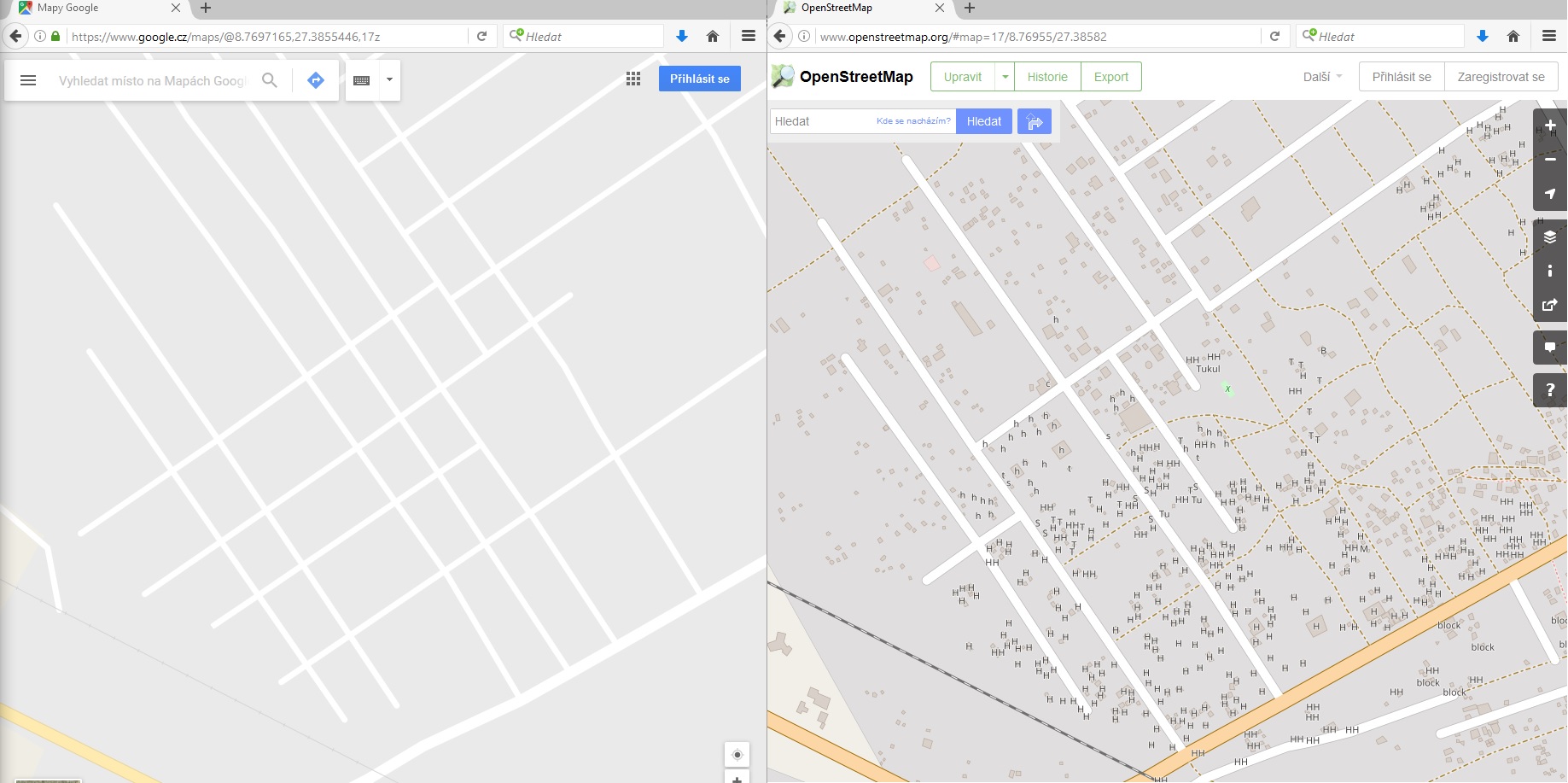
Kdy a kde to bude?
středa 18. prosince 2019 od 18:00 do 23:00
Kiwi.com office
Palachovo náměstí 4
62500 Brno-Starý Lískovec
Přesné místo mapathonu: https://www.openstreetmap.org/node/6109111100.
Registrace: https://www.eventbrite.co.uk/e/brnensky-prosincovy-missing-maps-mapathon-ve-spolecnosti-kiwicom-tickets-84144593745.
Co se na setkání bude dít?
Na mapathonu budeme společně podle satelitních snímků vytvářet v OpenStreetMap mapu jednoho z míst, na kterém působí Lékaři bez hranic.
Pokud nemáte zkušenosti, nevadí. Všechno se na místě naučíte a po krátkém školení už budete moci sami mapovat. Pokud máte zkušenosti, tím lépe. Budeme pracovat ve třech skupinách:
- Skupina začátečníků bude při školení získávat první zkušenosti s editací OpenStreetMap
- Zkušenější mapéři se budou mít možnost naučit program JOSM – volně dostupný pokročilý editor pro OpenStreetMap
- Ti, kteří už umí alespoň základy JOSM, se mohou vyškolit na validátory, kteří kontrolují výsledky práce dalších mapérů. Vyškolení co největšího počtu validátorů je aktuálně ten nejdůležitější úkol mapathonů po celém světě. Jsou nedostatkoví a vážení, tak se přidejte.
Samozřejmě, zváni jsou i zkušení uživatelé, kteří už žádné školení nepotřebují a chtějí jen nerušeně mapovat či validovat.
Pokud již patříte mezi zkušené a chtěli byste se přidat do organizačního týmu, tak se na tom na mapathonu rádi domluvíme.
Mám si něco připravit?
Pokud ještě nemáte účet na OpenStreetMap, vytvořte si ho zde: https://www.openstreetmap.org/user/new.
Pokud chcete být ve skupině pokročilých mapérů učících se JOSM, je vhodné mít na počítači předem nainstalován program JOSM. Je volně ke stažení na adrese https://josm.openstreetmap.de. Program vyžaduje nainstalovaný programovací jazyk Java.
Pokud chcete být ve skupině validátorů, je výhodou již alespoň základní znalost editoru JOSM. Ideální je proto nejdříve absolvovat mapathon ve skupině JOSM a na následujícím mapathonu přejít k validátorům.
Těší se na Vás společnost Kiwi.com, organizační tým brněnských mapathonů (Jakub, Jakub, Katka, Radim, Daniel a Michal) a občanské sdružení Amavet 962 - organizátor mapathonů na Slovensku.
Bližší informace: Radim Štampach (stampach@mail.muni.cz), Jan Bleha (jan.bleha@kiwi.com)
Brněnský prosincový Missing maps mapathon ve společnosti Kiwi.com
18.12.2019 18:00 Geografický ústav MUProsincový Missing maps mapathon ve společnosti Kiwi.com
Chcete se naladit na sváteční atmosféru? Nebo chcete na chvíli uniknout od nákupů, úklidu a pečení, tak si přijďte zamapovat. Tentokrát do firmy Kiwi.com.
Přijďte podpořit práci Lékařů bez hranic tím, že pomůžete do otevřené mapy světa OpenStreetMap zmapovat místa, která jsou ohrožena humanitárními krizemi. 
Kdy a kde to bude?
středa 18. prosince 2019 od 18:00 do 23:00
Kiwi.com office
Palachovo náměstí 4
62500 Brno-Starý Lískovec
Přesné místo mapathonu: https://www.openstreetmap.org/node/6109111100.
Registrace: https://www.eventbrite.co.uk/e/brnensky-prosincovy-missing-maps-mapathon-ve-spolecnosti-kiwicom-tickets-84144593745.
Co se na setkání bude dít?
Na mapathonu budeme společně podle satelitních snímků vytvářet v OpenStreetMap mapu jednoho z míst, na kterém působí Lékaři bez hranic.
Pokud nemáte zkušenosti, nevadí. Všechno se na místě naučíte a po krátkém školení už budete moci sami mapovat. Pokud máte zkušenosti, tím lépe. Budeme pracovat ve třech skupinách:
- Skupina začátečníků bude při školení získávat první zkušenosti s editací OpenStreetMap
- Zkušenější mapéři se budou mít možnost naučit program JOSM – volně dostupný pokročilý editor pro OpenStreetMap
- Ti, kteří už umí alespoň základy JOSM, se mohou vyškolit na validátory, kteří kontrolují výsledky práce dalších mapérů. Vyškolení co největšího počtu validátorů je aktuálně ten nejdůležitější úkol mapathonů po celém světě. Jsou nedostatkoví a vážení, tak se přidejte.
Samozřejmě, zváni jsou i zkušení uživatelé, kteří už žádné školení nepotřebují a chtějí jen nerušeně mapovat či validovat.
Pokud již patříte mezi zkušené a chtěli byste se přidat do organizačního týmu, tak se na tom na mapathonu rádi domluvíme.
Mám si něco připravit?
Pokud ještě nemáte účet na OpenStreetMap, vytvořte si ho zde: https://www.openstreetmap.org/user/new.
Pokud chcete být ve skupině pokročilých mapérů učících se JOSM, je vhodné mít na počítači předem nainstalován program JOSM. Je volně ke stažení na adrese https://josm.openstreetmap.de. Program vyžaduje nainstalovaný programovací jazyk Java.
Pokud chcete být ve skupině validátorů, je výhodou již alespoň základní znalost editoru JOSM. Ideální je proto nejdříve absolvovat mapathon ve skupině JOSM a na následujícím mapathonu přejít k validátorům.
Těší se na Vás společnost Kiwi.com, organizační tým brněnských mapathonů (Jakub, Jakub, Katka, Radim, Daniel a Michal) a občanské sdružení Amavet 962 - organizátor mapathonů na Slovensku.
Bližší informace: Radim Štampach (stampach@mail.muni.cz), Jan Bleha (jan.bleha@kiwi.com)
LeddarTech to Demonstrate Automotive LiDAR Detection and Classification Technology at CES 2020 in Las Vegas
18.12.2019 17:55 GISCafe.com Webcasts-Webinars QUEBEC CITY, Dec. 18, 2019 (GLOBE NEWSWIRE) -- LeddarTech®, an industry leader in LiDAR technology providing the most versatile and …Silicon Valley Adopts NG9-1-1 GIS Technology from DATAMARK
18.12.2019 17:55 GISCafe.com Webcasts-Webinars Santa Clara County joins San Mateo and Merced Counties in NG9-1-1 transitioning efforts SANTA ANA, Calif., Dec. 18, 2019 (GLOBE NEWSWIRE) -- To …LeddarTech to Demonstrate Automotive LiDAR Detection and Classification Technology at CES 2020 in Las Vegas
18.12.2019 17:55 GISCafe.com Webcasts-Webinars QUEBEC CITY, Dec. 18, 2019 (GLOBE NEWSWIRE) -- LeddarTech®, an industry leader in LiDAR technology providing the most versatile and …Carlson Workshops
18.12.2019 16:38 Carlson Software The end of fall routinely means cold weather is on its way (at least for me) and the beginning of another season of workshops, conferences and training. As I write this blog, I just completed teaching at a three-day workshop in Raleigh, North Carolina. There were somewhere around 150 surveyors and engineers attending this workshop. […]Hledáme nového kolegu / kolegyni pro GIS úřadu
18.12.2019 13:15 Středočeský kraj Máte rád(a) mapy a vše kolem nich? Umíte pracovat v produktech ArcGIS (Desktop, Server)? Baví Vás hledat nová řešení? Jste ochotný(á) učit se nové věci? Umíte pracovat v týmu a zároveň umíte být samostatný(á)? Je na Vás spolehnutí? Pak jste to právě Vy, koho hledáme!Instrument flying supported by EGNOS for General Aviation
18.12.2019 12:49 European GNSS Agency
Even though the General Aviation (GA) community undertakes millions of flights on aircraft equipped with GNSS-receivers, it is not taking full advantage of the technology. It is a priority of the European GNSS Agency (GSA) to support GA by facilitating instrument procedures with EGNOS. As a first step the GSA has identified enablers and blocking points along with aviation stakeholders and the European Aviation Safety Agency (EASA).
There are currently 660 EGNOS procedures in Europe, most of which are at instrument runways. However, EGNOS can also support general and business aviation on non-instrument runways. The GSA has issued safety promotion material on GNSS-based Instrument Flight Procedures implementation for General Aviation, Uncontrolled Aerodromes and Non-Instrument Runways in an effort to address this and encourage a wider use of EGNOS in general aviation.
The materials draw together the current regulatory analysis supporting EGNOS operations, along with enablers and best practices to support implementation, open issues and, last but not least, use case examples to encourage national authorities to authorise these types of operations in their countries. This includes examples showcasing how these can be implemented at locations where there are currently visual flight rules only.
Read this: EGNSS enabling change in General Aviation
High engagement
This document is aligned with the EASA Roadmap for General Aviation, which identifies simpler, more proportional rules and operations that are cost efficient, flexible and based on existing best practices. It aims to provide a view on the current implementation enablers in different EU countries and highlights the results of EASA RMTs (Rule Making Tasks) which can be relevant for the implementation of IFR for General Aviation.
“The General Aviation community undertakes millions of flights with aircraft equipped with GNSS-receivers without using the full capabilities of this new technology. By developing IFR procedures for situations where the ground infrastructure may not be present at the aerodrome it would enable GA pilots to plan A-to-B flights with more confidence of being able to complete them safely in changing weather conditions, which would have a positive impact on safety. EASA is extremely grateful to EGA for this collaborative effort,” said Dominique Roland, Head of General Aviation & Remotely Piloted Aircraft Systems at EASA.
The document will be of interest to General Aviation community, aerodromes, and air traffic control staff and national authorities alike. Publication of this document aims to start a discussion within the General aviation community, trigger future pilot cases and obtain feedback to identify the tools that should be developed to support the implementation of the IFR procedures for general aviation.
“Engagement from the aviation community has been high - we received more than 320 comments from over 25 contributors, including civil aviation authorities, air navigation service providers and others during preparation of the document. The GSA would like to thank all the contributors and supporters of this initiative, as this support was fundamental to the development of the document,” said GSA head of Market Development department Fiammetta Diani. “Special thanks go to EASA, ESSP, PPL IR, AOPA, EBAA, Austro Control, DFS, IDRF, FOCA Swiss, the Swedish Transport Agency, Europe Air Sports and the European Regional Aerodromes Community,” she said.
Just the beginning
The document will be published as a Safety Promotion material under EASA’s Together4Safety Safety Promotion initiative. This initiative is a key enabler towards reaching the ultimate objectives of the EU Aviation Safety Management Strategy and contributes to the continuous improvement of aviation safety in Europe and worldwide, together with regulations and oversight.
And this: Austro Control and EGNOS – a story of success
Publication of the materials is just the beginning. The GSA is launching a network of pilot cases in 2020 to collect lessons learned and best practices to promote and support future implementation. It is also proof that GNSS/SBAS is ready to support many different types of operations, extending beyond the traditional scope or initial objectives that the technology was designed for. If you would like to be among first to implement LPV at a non-instrument runway, you are more than welcome!
Media note: This feature can be republished without charge provided the European GNSS Agency (GSA) is acknowledged as the source at the top or the bottom of the story. You must request permission before you use any of the photographs on the site. If you republish, we would be grateful if you could link back to the GSA website (http://www.gsa.europa.eu).
Odborný referent v oddělení právních vztahů k nemovitostem Katastrálního pracoviště Chomutov na Kata
18.12.2019 12:07 ČÚZK - volná místa Katastrální úřad pro Ústecký kraj Katastrální pracoviště Chomutov vypisuje výběrové řízení na místo Odborný referent v oddělení právních vztahů k nemovitostem Katastrálního pracoviště Chomutov na KataOdborný referent v oddělení právních vztahů k nemovitostem Katastrálního pracoviště Chomutov na Kata
18.12.2019 12:07 ČÚZK /Urady/Katastralni-urady/Katastralni-urady/Katastralni-urad-pro-Ustecky-kraj/Uredni-deska/Oznameni-a-jina-uredni-sdeleni/Volna-mista/DMS/Odborny-referent-v-oddeleni-pravnich-vztahu-k-(1)Odborný referent v oddělení právních vztahů k nemovitostem Katastrálního pracoviště Chomutov na Kata
18.12.2019 12:07 ČÚZK - předpisy a opatření Katastrální úřad pro Ústecký kraj Katastrální pracoviště Chomutovvypisuje výběrové řízení na místo
Odborný referent v oddělení právních vztahů k nemovitostem Katastrálního pracoviště Chomutov na Katastrálním úřadu pro Ústecký kraj
Last calls for Horizon 2020, first views for Horizon Europe
18.12.2019 11:40 European GNSS Agency
The second day of the EU Space Week event in Helsinki opened with an overview of the final tranche of project calls under the Horizon 2020 space programme. The final Horizon 2020 EGNSS (Galileo and EGNOS) calls are now open, with a closing date of 5 March 2020. The session covered research and innovation topics across Copernicus, EGNOS and Galileo programmes and also took a look to the future with Horizon Europe.
The context of the calls, in terms of EGNSS market uptake, was described by Reinhard Blasi from the GSA. “European investments in EGNSS are already making profits, with some EUR 2.8 billion of benefits computed for 2018 alone,” he stated. Currently EGNSS market revenues represent 25% of global sales, with a target of 30% to be achieved by 2025.
Funding downstream research and innovation is an important component of the GSA’s integrated strategy to foster the adoption of EGNSS technologies and boost EU competitiveness.
The H2020-SPACE-EGNSS-2020 call is open until 5 March, has an overall indicative budget of EUR 21 million and covers four topics: EGNSS apps for green, smart transport, EGNSS for mass market digitisation, EGNSS apps for resilience and environmental protection, and EGNSS applications for public authority procurement of research. The last topic is the first attempt to use the Pre-Commercial Procurement (PCP) instrument under Horizon 2020 in the EGNSS domain.
Fundamental work
The GSA’s Fundamental Elements programme has also issued project calls with more to come. The published calls include development of an enhanced GNSS User terminal, emerging EGNSS receiver technologies, development of advanced interference systems, and the development of a drone-borne double frequency receiver. Three more calls to be published in December will cover receivers for rail applications, high precision in the mass market, and a shipborne double frequency, multi-constellation receiver.
Read this: GSA funding: Filling the gaps and emerging technologies
“There is still much to do in 2020 and beyond,” said Blasi. “The GSA has three main objectives: to complete the uptake of EGNSS in more long-term regulated markets, position Galileo as the leader with its differentiating characteristics including authentication and high accuracy, and continue to support the downstream industry.”
Eric Guyader from the European Commission outlined upcoming calls administered through the Commission’s EGNSS Mission and Services (MAS) actions. Two calls are to be published soon on R&D for EGNOS services for payment or liability critical applications in the road sector and EGNSS rail safety services.
And this: Targeting the development of a drone-borne Galileo receiver
In addition, up to eight calls may be published in 2020 under the European Space Agency administered Horizon 2020 Satellite Navigation programme (HSNAV) with some EUR 2 million earmarked for projects relating to EGNSS evolution projects.
STRIKE success
An EGNSS research success story was provided by Zahidul Bhuiyan of the Finnish National Land Survey who described the Strike-3 project funded under Horizon 2020 looking at standardisation of GNSS Interference Threat Monitoring and Receiver Testing. The project had set up an international network to monitor GNSS interference. “GNSS needs protection,” said Bhuiyan. “STRIKE-3 aimed to improve our understanding of the threat scene facing stakeholders in implementing GNSS safety and security.”
The project found that out of over half a million monitored interference events, both unintentional and malicious, only 5% had an impact on the receiver, with the vast majority not actually denying the use of GNSS. The project reinforced the recognition that improved interference detection and mitigation can help the robustness of PNT services, in particular for critical infrastructure, and its receiver testing standard document provides a good initial test standard to ensure that reports from different systems are compatible.
Horizon Europe
Although the budget for the next Framework R&D programme for 2021-2027, Horizon Europe, is still subject to negotiation Mats Ljungqvist of DG GROW gave an overview of the current state of play. The current budget for the EU Space Programme in Horizon Europe is EUR 16 billion with some EUR 9.7 billion allocated to EGNSS topics.
An orientation document on the first strategic plan and work programme for Horizon Europe published at the end of October contains two sections on space research and innovation: 4.8 ‘A globally competitive space sector reinforcing EU sovereignty’ and 4.11 ‘New services from Space for the EU society and economy’.
Within the three pillars of Horizon Europe, Pillar 2 on Global Challenges and Industrial Competitiveness is allocated around half the total budget and includes a cluster (Digital, Industry & Space) that directly addresses space topics. “Pillar 3 on Open Innovation will also be of interest to the space sector,” said Ljungqvist. “An Enhanced European Innovation Council will provide accelerator and pathfinder grants to help bring bright ideas to market.”
Higher innovation funding should also be made available via an enhanced InvestEU programme where a European Union guarantee of some EUR 40 billion is looking to mobilise up to EUR 700 billion of private investment for growth and scale-up.
Together with a new Commission Directorate-General for Defence and Space, starting work at the beginning of 2020, there is a clear focus for space-related strategy and activities in Europe that reflect the growing importance of the space sector.
The GSA and the Commission have also been consulting with GNSS user communities to take their input into consideration when defining EGNSS downstream funding priorities in the new financial perspective. A recent report from the GSA summarises the results of these consultations and outlines future R&I priorities.
Media note: This feature can be republished without charge provided the European GNSS Agency (GSA) is acknowledged as the source at the top or the bottom of the story. You must request permission before you use any of the photographs on the site. If you republish, we would be grateful if you could link back to the GSA website (http://www.gsa.europa.eu).
Earth observation + icon
18.12.2019 11:32 ESA Observing the Earth
ESA Earth observation
ESA Earth observation
MyGalileoApp shines spotlight on opportunities for start-ups
18.12.2019 11:04 European GNSS Agency
Concrete funding opportunities that are available to space tech start-ups were in focus at the MyGalileoApp competition, held at the European GNSS Agency’s (GSA) headquarters in Prague on 7 November. At an investors panel discussion held as part of the event, start-ups heard about some of the concrete funding opportunities that are available to them.
Kicking-off the panel discussion, Marta Krywanis-Brzostowska, Head of Downstream R&D in the GSA Market Development Department, noted that the Agency currently has a portfolio of over 60 projects worth a total of over EUR 120 million. She said that, through Horizon 2020, the GSA is supporting the development of applications, while the Fundamental Elements mechanism targets the development of hardware, such as chipsets and receivers.
Noting that funding is also made available through aviation grants and smaller initiatives like MyGalileoApp and other prizes such as the Galileo Masters and Farming by Satellite, Krywanis-Brzostowska said that start-ups stand to receive more dedicated support in the future.
Dedicated start-up programme
“We are aware that there is a need to support start-ups, this is why in the new financial framework after 2020 we are planning, along with the European Commission, to define a dedicated programme that will support start-ups,” she said.
Read this: EU space infrastructure guarantees leadership in security and defence
Thierry Chapuis, space applications expert at CNES (Centre National d’Etudes Spatiales) in France spoke about some of the support available through his organisation, in particular the Connect by CNES initiative, which was set up to help private and public actors to develop their applications. CNES is also participating in and funding the ESA Business Incubation Centres at the French national level. CNES is also working at the aviation level and organising hackathons such as Act in Space, the next edition of which will be in April 2020, he said.
Like Krywanis-Brzostowska, Chapuis also noted that start-ups stood to benefit from some dedicated support. “The French government has decided to develop start-ups and a big budget of EUR 400 million has been approved. CNES is responsible for selecting start-ups related to space activities within this programme,” he said.
Advancing to the next stage
João Duarte, responsible for early stage venture capital at Lighthouse Ventures, a EUR 23-million fund based in Prague, said that his company supports early stage start-ups with between 50,000 to 700,000 euros per start-up, with EUR 300,000 being the most typical amount. “We also have an acceleration programme where we invest EUR 20,000 for a couple of months to help a start-up go from the idea stage to having a business plan and some early customers. If they successfully complete the acceleration, then they will be eligible for larger investment to take them to the next stage,” he said.
And this: GSA, EIB sign agreement on investment in space
Representing UP21, an incubator and seed fund based in Prague, Anna Efros informed the participants that, so far her company had carried out 16 investments in two strategies: incubation with up to EUR 30,000 for 3-6 months, and larger investments of up to EUR 500,000 euros. “We are currently setting up a venture capital fund called START21 which will hopefully amount to EUR 25 million, and also we are co-organiser of the Start-up World Cup and Summit, which will be held in April 2020,” she said.
Money to disperse
Unlike other similar agencies, the Italian Space Agency doesn’t have its own research labs. However, Anilkumar Dave, Head of Innovation and Transfer of Technologies at the Agency, said that it has a lot of government money to disburse. “We will launch the first venture capital fund on space in Italy at the end of this year, where we are the cornerstone investor - but we will not invest in early-stage and seed, but rather in SMEs,” he said.
Marketa Filipenska, International Funding Specialist at the South Moravian Innovation Centre (JIC) noted that her centre had recently opened a European Space Agency BIC where it is helping people with ideas related to space upstream and downstream. “We are providing them with EUR 50,000 and business mentoring, in addition to connecting them to big players in the sector,” she said.
Wrapping up the discussion, Fiammetta Diani, Head of Market Development at the GSA, spoke about a Memorandum of Understanding that the GSA signed with the European Investment Bank (EIB) in September this year, dealing with cooperation on supporting investment in the European space-based service economy. “The MoU aims to give space start-ups a greater portfolio of opportunities and tools to help them to grow,” she said.
Media note: This feature can be republished without charge provided the European GNSS Agency (GSA) is acknowledged as the source at the top or the bottom of the story. You must request permission before you use any of the photographs on the site. If you republish, we would be grateful if you could link back to the GSA website (http://www.gsa.europa.eu).
Mapujeme drony skalní útvary pro výzkumné projekty Univerzity Karlovy tentokrát v Saském Švýcarsku
18.12.2019 10:33 UpVisionProvádíme průběžně letecké mapování různých skalních útvarů pomocí LiDARu i fotogrammetrie pro výzkumné úkoly, jako tentokrát nedaleko za hranicemi v Saském Švýcarsku. Provádíme průběžně letecké mapování různých skalních útvarů pomocí LiDARu i fotogrammetrie pro výzkumné úkoly, jako tentokrát nedaleko za hranicemi v Saském Švýcarsku. Zveřejnil(a) UpVision dne Úterý 17. prosince 2019
The post Mapujeme drony skalní útvary pro výzkumné projekty Univerzity Karlovy tentokrát v Saském Švýcarsku appeared first on Upvision.
rada/odborný rada - právník
18.12.2019 9:58 ČÚZK /Urady/Katastralni-urady/Katastralni-urady/Katastralni-urad-pro-hlavni-mesto-Prahu/O-uradu/Aktuality/rada-odborny-rada-pravnikrada/odborný rada - právník
18.12.2019 9:58 ČÚZK - předpisy a opatření Katastrální úřad pro hlavní město Prahu - Katastrální pracoviště Praha zveřejnil novou aktualitu: Ředitel úřadu vyhlašuje výběrové řízení na služební místo: rada/odborný rada - právníkrada/odborný rada - právník
18.12.2019 9:58 ČÚZK - předpisy a opatření Katastrální úřad pro hlavní město Prahu zveřejnil novou aktualitu: Ředitel úřadu vyhlašuje výběrové řízení na služební místo: referent KN – kontrolorreferent KN – vedení DKM, vedení katastrální mapy
18.12.2019 9:58 ČÚZK - předpisy a opatření Katastrální úřad pro hlavní město Prahu zveřejnil novou aktualitu: Ředitel úřadu vyhlašuje výběrové řízení na služební místo: referent KN – vedení DKM, vedení katastrální mapy20191218- Provoz 31.12
18.12.2019 9:51 ČÚZK /Urady/Katastralni-urady/Katastralni-urady/Katastralni-urad-pro-Karlovarsky-kraj/O-uradu/Aktuality/20191218-Provoz-31-1220191218- Provoz 31.12
18.12.2019 9:51 ČÚZK - předpisy a opatření Katastrální úřad pro Karlovarský kraj zveřejnil novou aktualitu: Katastrální úřad pro Karlovarský kraj Vás informuje, že z provozních důvodů bude možno dne 31. 12. 2019 hradit veškeré poplatky na katastrálních pracovištích Karlovy Vary, Sokolov a Cheb pouze platební kartou, nebo donesenou kolkovou známkou.Děkujeme Vám za pochopení.
rada/odborný rada - právník
18.12.2019 9:50 ČÚZK - předpisy a opatření Katastrální úřad pro hlavní město Prahuvypisuje výběrové řízení na místo
rada/odborný rada - právník
rada/odborný rada - právník
18.12.2019 9:50 ČÚZK - předpisy a opatření Katastrální úřad pro hlavní město Prahu Katastrální pracoviště Prahavypisuje výběrové řízení na místo
rada/odborný rada - právník
rada/odborný rada - právník
18.12.2019 9:50 ČÚZK - volná místa Katastrální úřad pro hlavní město Prahu - Katastrální pracoviště Praha vypisuje výběrové řízení na místo rada/odborný rada - právníkrada/odborný rada - právník
18.12.2019 9:50 ČÚZK - předpisy a opatření Katastrální úřad pro hlavní město Prahu - Katastrální pracoviště Prahavypisuje výběrové řízení na místo
rada/odborný rada - právník
rada/odborný rada - právník
18.12.2019 9:50 ČÚZK - volná místa Katastrální úřad pro hlavní město Prahu Katastrální pracoviště Praha vypisuje výběrové řízení na místo rada/odborný rada - právníkrada/odborný rada - právník
18.12.2019 9:50 ČÚZK /Urady/Katastralni-urady/Katastralni-urady/Katastralni-urad-pro-hlavni-mesto-Prahu/Uredni-deska/Oznameni-a-jina-uredni-sdeleni/Volna-mista/DMS/rada-odborny-rada-pravnik-(2)rada/odborný rada - právník
18.12.2019 9:50 ČÚZK - volná místa Katastrální úřad pro hlavní město Prahu vypisuje výběrové řízení na místo rada/odborný rada - právníkProstorové simulační modelování dopravní dostupnosti
18.12.2019 9:15 Katedra geoinformatiky UP OlomoucDalší kniha na obzoru 👌 V těchto dnech vyšla další monografie s názvem Prostorové simulační modelování dopravní dostupnost z ediční řady Geographica 🌍 Kniha vznikla v širším kolektivu autorů vedené doc. Jiřím Horákem a doc. Jaroslavem Burianem, a kromě jiných se na ní podílela v značné míře dr. Lenka Zajíčková, nebo i prof. Vít Voženílek 🤓 https://geography.cz/prispevek/nova-monografie-v-edici-geographica/?fbclid=IwAR1omCQCXRU6xQgOqeNCo_ygsB41hvLw3wSsYyGZVOGRrtgOL1b95ZIoOzY
The post Prostorové simulační modelování dopravní dostupnosti appeared first on Katedra geoinformatiky.
rada/odborný rada – inspektor Zeměměřického a katastrálního inspektorátu v Pardubicích
18.12.2019 9:08 ČÚZK - předpisy a opatření Zeměměřický a katastrální inspektorát v Pardubicíchvypisuje výběrové řízení na místo
rada/odborný rada – inspektor Zeměměřického a katastrálního inspektorátu v Pardubicích
rada/odborný rada – inspektor Zeměměřického a katastrálního inspektorátu v Pardubicích
18.12.2019 9:08 ČÚZK /Urady/Zememericke-a-katastralni-inspektoraty/Zememericke-a-katastralni-inspektoraty/Zememericky-a-katastralni-inspektorat-v-Pardubicic/Uredni-deska/Oznameni-a-jina-uredni-sdeleni/Volna-mista/DMS/rada-odborny-rada-–-inspektor-Zememerickeho-a-katarada/odborný rada – inspektor Zeměměřického a katastrálního inspektorátu v Pardubicích
18.12.2019 9:08 ČÚZK - volná místa Zeměměřický a katastrální inspektorát v Pardubicích vypisuje výběrové řízení na místo rada/odborný rada – inspektor Zeměměřického a katastrálního inspektorátu v PardubicíchUpozornění
18.12.2019 9:07 ČÚZK - předpisy a opatření Katastrální úřad pro Vysočinu - Katastrální pracoviště Havlíčkův Brod zveřejnil novou aktualitu: Ve dnech 30.-31.12.2019 lze z technických důvodů správní poplatky uhradit pouze kolkovými známkami, bezhotovostním převodem nebo platebními kartami.Děkujeme za pochopení.
Upozornění
18.12.2019 9:07 ČÚZK /Urady/Katastralni-urady/Katastralni-urady/Katastralni-urad-pro-Vysocinu/Katastralni-pracoviste/KP-Havlickuv-Brod/O-uradu/Aktuality/UpozorneniSHIFT RED Next Generation Drone System creates New Style beyond UAV
17.12.2019 21:38 GISCafe.com Webcasts-Webinars SEOUL, KOREA, Dec 18, 2019 - (ACN Newswire) - TIE (this is engineering, Inc.), a global leader in UAV and Robotics technology and products, is …Presentation Proposals Invited for GIS-Pro 2020 in Baltimore
17.12.2019 21:31 GISCafe.com Webcasts-Webinars Des Plaines, IL (December 17, 2019) URISA is pleased to invite presentation proposals for GIS-Pro 2020 in Baltimore. The conference will …General Land Office Preserves More Than 45,000 Maps, Surveys and Sketches with a Contex Large Format Scanner
17.12.2019 20:45 GISCafe.com Webcasts-Webinars The Market’s Fastest, Most Productive Scanner Boosts Agency’s Productivity by 25%
Chantilly, VA — December 17, 2019 …



